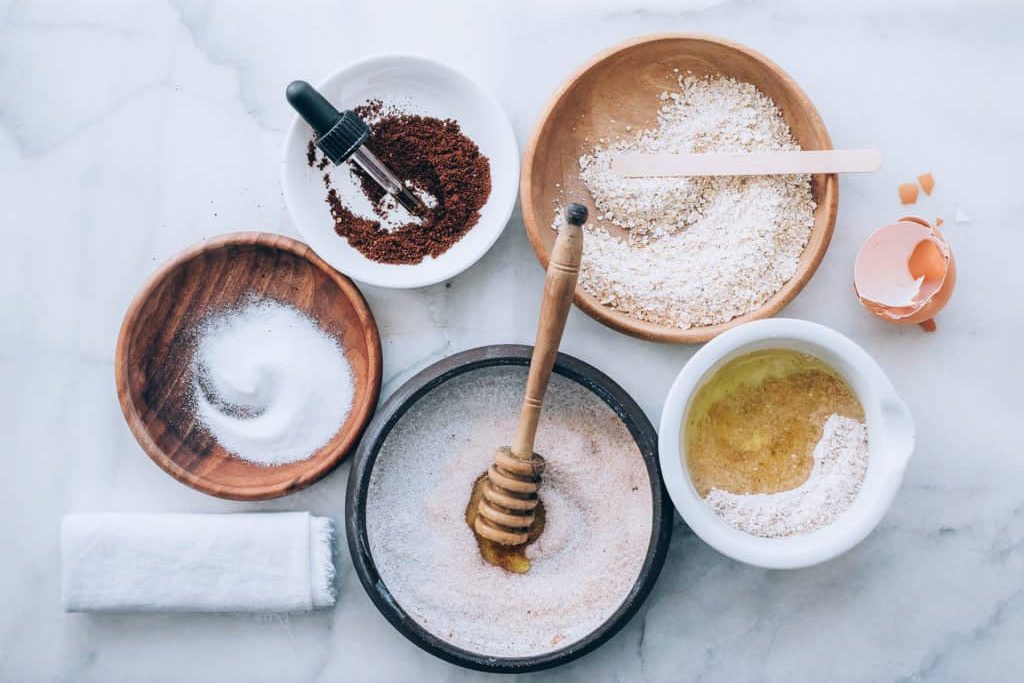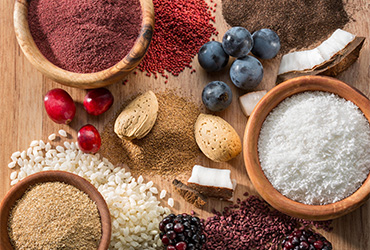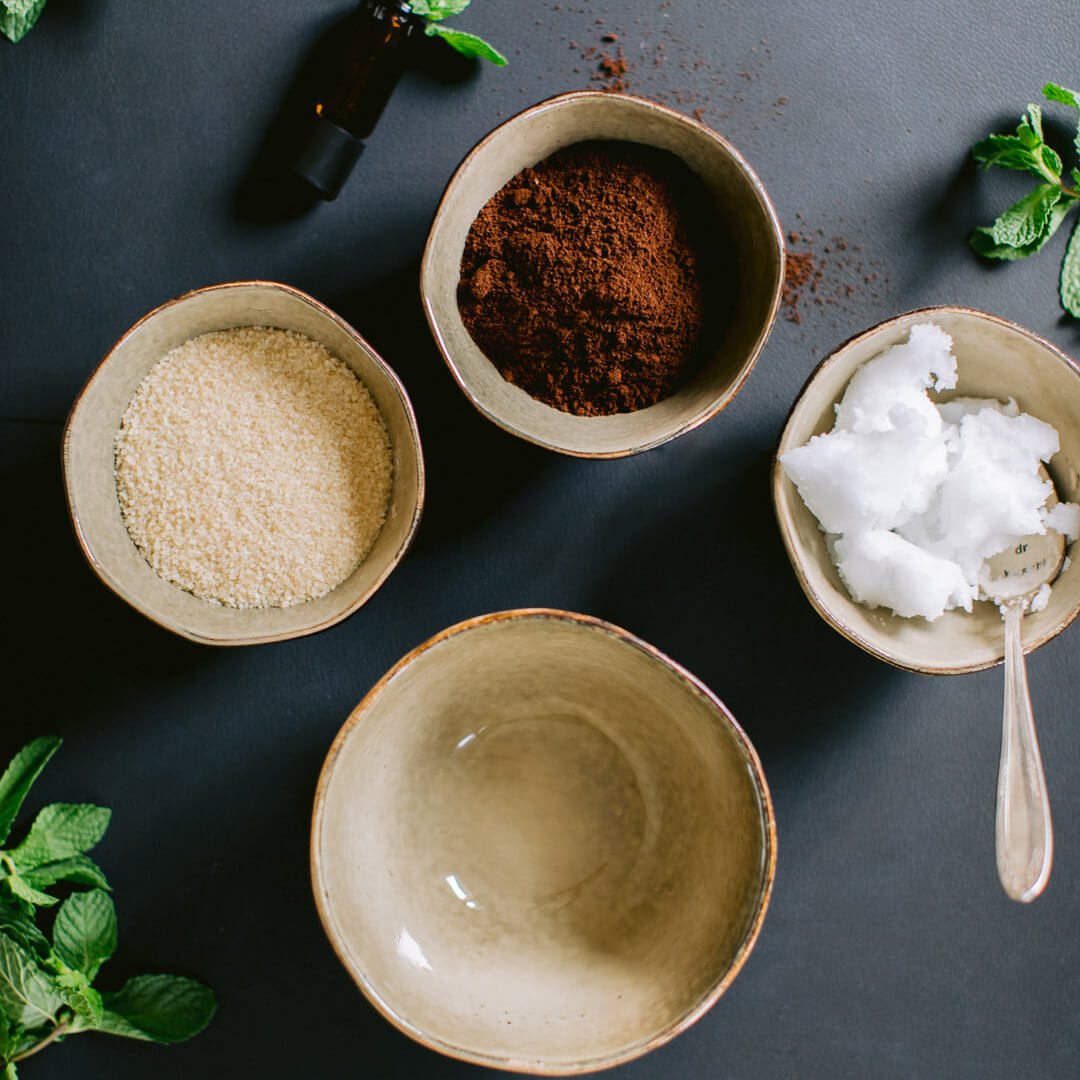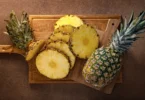Do you know that some handy kitchen ingredients could be used as Natural Exfoliators? In our previous post, we talked about exfoliation and how vital it is to kick off those dead skin cells to enhance skin clarity and boost confidence!
In case you missed it!
Exfoliation is the removal of debris from the skin surface, in order words the removal of dead skin cells from the surface of our skin.
The process of removing these dead cells with tools or substances like a chemical, gritty substances, or exfoliation tool is called exfoliating. Lack of exfoliation can lead to dry, flaky patches and clogged pores. which eventually causes breakout on the face or itching skin.
Citing the American Academy of [1] Dermatology, exfoliation can leave your skin glowing and help boost the effectiveness of topical skin care products by enhancing absorption rapidly.
Read more on 3 reasons why to exfoliate regularly!
Today we are diving into what are these natural exfoliants and how to make do with the ones we can get in our homes
What are Natural Exfoliant

Do you believe that an exfoliant doesn’t have to be expensive to be effective? YES! that’s correct, many natural products that you likely already have in your pantry may be all you need to exfoliate your skin.
Most of these items can create just enough friction to remove dead cells from the surface of your skin.
Some popular natural exfoliants include that might have come to your attention includes:
- baking soda
- Granulated sugar
- coffee grounds
- grounded almonds
- oatmeal
- grounded sea salt
- cinnamon powder
Additionally, You can combine some other products often found in your kitchen with these natural exfoliants.
For instance:
- honey
- green tea or chamomile tea
- essential oils
These are all examples of physical natural exfoliants. This means that by gently rubbing or massaging them on your skin, you can get rid of the dead skin cells.
Remember that we highlighted the difference between physical exfoliants from chemical exfoliants, which contain skin-friendly agents like alpha hydroxy acid and retinol to loosen and remove dead skin cells.
Natural exfoliants for your face
The exfoliants that are used on the face ought to be very processed with small, even powdered particles. This is because your facial skin is more delicate and softer than other areas of your body, rough exfoliants, like sea salt, sugar, or coffee, aren’t a good option, they can irritate your face.
Additionally, It is also very important not to over-exfoliate your face. Exfoliating too often can strip the skin on your face of its natural oils needed for balance and lead to breakouts!
Too much face scrubbing may also cause your skin to become irritated or wrinkled.
Most professional skin care experts agree that exfoliating your face once or twice a week is best for almost all skin types.
Some examples of natural physical exfoliants for the face include:
- baking soda
- very smoothly grounded oatmeal
- cinnamon powder
A DIY facial scrub recipe
For Acne-prone skin
For acne-prone skin, baking soda and honey scrub might just do the magic. This facial scrub recipe, which comes with its anti-inflammatory and oil-reducing ingredients, is well-tailored to suit acne-prone skin.
Ingredients needed
- 2 tbsp. baking soda
- 2 tsp. honey
- 1 tbsp. aloe vera gel
- 1/2 tsp. vitamin E oil
- 2 drops of tea tree oil
How-to
- First combine all the ingredients in a mixing bowl, and stir them all together
- Then proceed to washing your face, after that,
- apply the scrub mixture to your skin with clean fingers. Gently, in circular motions with your fingertips to smooth the scrub all over your face. Do this in a circular motions for 1-2 minutes.
- Allow the scrub to sit on your skin for an additional 2 minutes.
- Then rinse the scrub off your face with lukewarm water.
- Apply an oil-free moisturizer — yes, even acne-prone skin can benefit from a light moisturizer — after rinsing.
This is due to the fact that the skin on your body tends to be thicker and less delicate than the skin on your face, you can often use slightly coarser exfoliants.
Some popular natural physical exfoliants include:
- grounded brown sugar
- coffee grounds
- oatmeal
- grounded sea salt
Kindly note that you need to refrain from using sea salt if you have a cut on your skin. The salt may irritate and burn an open wound, which could lead to an infection.
A DIY recipe for body scrubs

Oatmeal body scrub
Its popularly known that oatmeal body scrub can help soften your skin, thanks to the skin-soothing beta-glucan compound that’s naturally present in the oatmeal grain.
This oatmeal scrub is great to use in the shower or bathtub once the warm water has already softened your skin.
Ingredients
- 1 cup old-fashioned oats (this type of oats is less processed than oatmeal in packets)
- 1/2 cup coconut oil or jojoba oil
- 1/2 cup grapeseed oil
- 1 tbsp. brown sugar
- 2 chamomile tea bags
How to
- Blend the oats in a food processor until the oats have a fine dust-like consistency, then pour into a mixing bowl.
- Mix the other ingredients such as chamomile tea bags, (empty the tea bags), coconut oil or jojoba oil, grapeseed oil, and brown sugar with the ground oats, and mix until everything is well blended
- Apply the scrub all over your body using gentle circular motions, but be sure to avoid your face.
- Once you’ve finished applying the scrub, rinse it off with lukewarm water.
- Towel or air-dry your skin before applying a moisturizing body lotion or oil.
A DIY lip scrub
Because your lips are very more delicate than the skin on your body, you might want to use different ingredients than you would for a body scrub.
Examples of natural exfoliants include:
- finely ground sugar
- cinnamon
- finely ground coffee
Additionally, you might want to include some healthy components in a lip scrub. Such as:
- an almond oil
- a coconut oil
- a honey
- an olive oil
- and a vitamin E oil
Additionally, you may consider wanting to add a sweet-smelling component to make the scrub extra appealing and fun to use. Some options include:
- cocoa powder
- vanilla extract
- peppermint oil or extract
It is important to note that over-exfoliating your lips can cause them to become irritated and dry. For this reason, you should only exfoliate your lips once a week.
If you have any pimples or blisters on your lips, hold off on exfoliating until these are cleared up.
DIY recipes

For Vanilla coffee lip scrub
This vanilla coffee lip scrub uses a healthy moisturizer, like oil and honey, with exfoliating ingredients such as properly ground coffee and sugar.
Ingredients
- 1 tsp. finely ground coffee
- 1 tsp. coconut, olive, or jojoba oil
- 1/2 tsp. honey
- 1/4 tsp. vanilla extract
- 1 tsp. finely ground white sugar
How to
All you have to do is;
- First combine all the ingredients in a bowl and mix until well blended.
- Apply the scrub to your lips with clean fingers, rubbing in circular motions for about 1 minute.
- Gently rinse off the scrub with lukewarm water.
- Apply a moisturizer, such as petroleum jelly or lip balm, after exfoliating.
For Sugar lip scrub
This particular DIY lip scrub uses sugar as the main exfoliant and combines honey and oil to moisturize and soothe the skin on your lips.
Ingredients
- 2 tbsp. well processed grounded sugar
- 1 tbsp. olive oil
- 1/2 tsp. honey
- 1-2 drops of your favorite essential oil
Directions
- Combine all the ingredients in a bowl and mix until well blended.
- Follow the same directions outlined above for the vanilla coffee scrub.
What to avoid when getting an exfoliation
As we are very much aware that the skin is very delicate, therefore anything that’s applied to your skin must be applied to be with care,.
However, there’s always a risk that one may have an allergic reaction to one or more of the components. This is especially true for essential oils or the exfoliants themselves.
You may want to do a patch test on a small area of your skin (your elbow part) to ensure you don’t get red and itchy from an ingredient.
Also, you ought to be careful of any natural exfoliant that is not properly grounded. If an exfoliant, like coarse sea salt, granulated sugar, coffee grinds, or oatmeal, has jagged edges it could tear or damage your skin.
It is very important to carefully observe the texture of all-natural exfoliants, and make sure the granules are smooth and small enough to apply to your skin.






